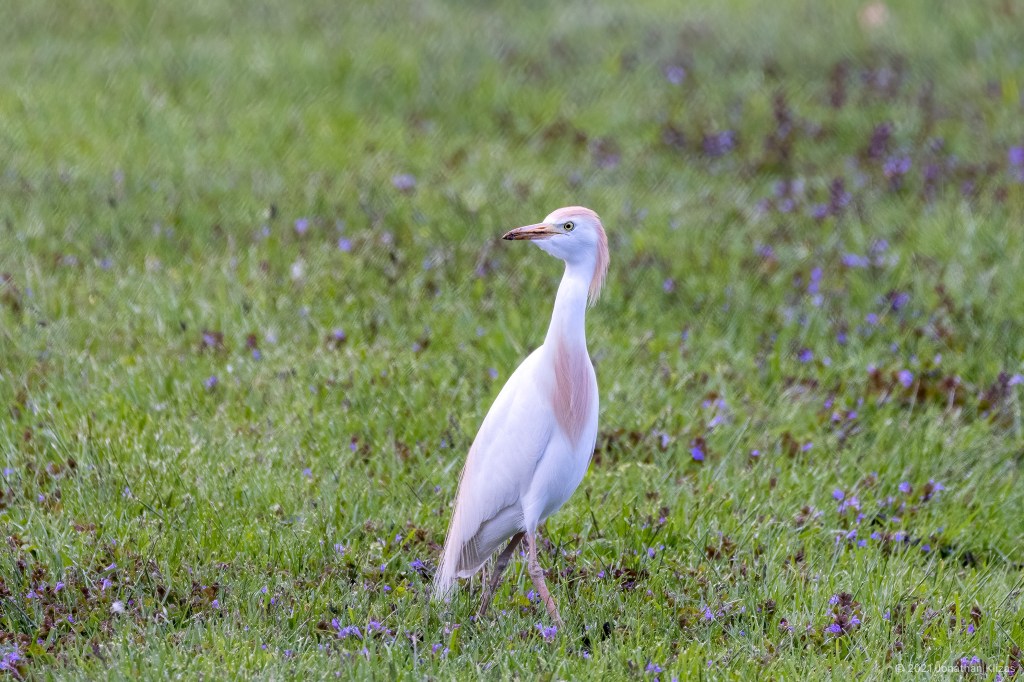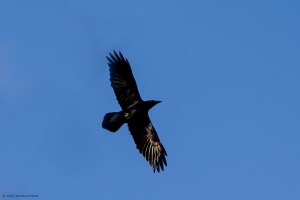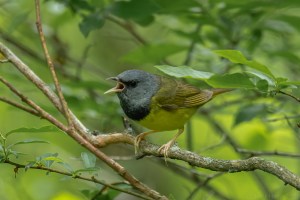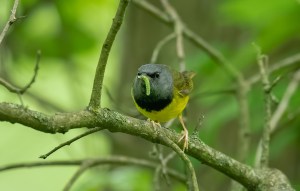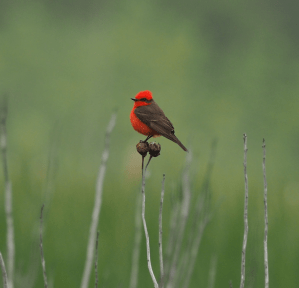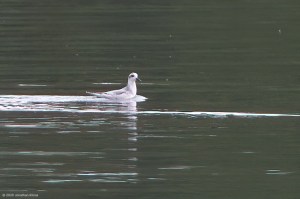
Red Phalarope, Lake Parsippany, Morris Co., NJ, Sept. 26, 2020 (photo by Jonathan Klizas)
Lake Parsippany does not qualify as a pelagic destination but for reasons best reserved for the species themselves to divulge, a Red Phalarope, one of the most ocean-faring of shorebird species, spent the day at the southern end of the lake, viewed by many observers.
Separating the three phalarope species (Red, Red-necked, and Wilson’s) can be a daunting task in fall migration. Credit goes to Sean Ondich for finding and initially identifying the bird and to Rob Fanning for broadcasting the finding on the local rare bird text alerts.
Jeff Ellerbusch describes this particular individual as a “hatch-year Red Phalarope pretty far along into first pre-basic molt.” The phalarope’s identification was in question for a while this afternoon based on in-person observation and photo study as the bird showed conflicting characteristics of both Red and Red-necked Phalaropes.
In the end, Red Phalarope won out over Red-necked. Jeff heard a diagnostic high-pitched call which helped to clinch the identification. Also, Red Phalarope juveniles are further along in their molt cycle than Red-necked Phalaropes at this time of the year.
This is a historic sighting. As far as is known, this is the first record of a Red Phalarope in Morris County since September 1, 1990, when one was located at Boonton Reservoir by two giants in the history of New Jersey birding, Rich Kane and Tom Halliwell. That is thirty years and twenty-five days ago. Tom also has the only other known Red Phalarope record for Morris County from Lake Musconetcong on August 12, 1982.
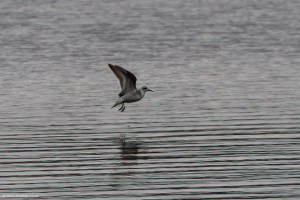
Red Phalarope, Lake Parsippany, Morris Co., NJ, Sept. 26, 2020 (photo by Jonathan Klizas)
American Golden-Plover in Morris County
Another sighting that has historic value for Morris County, is the American Golden-Plover found and photographed by Clint Robinson on September 21 at Freund Park, Roxbury Township. This is also known as Horseshoe Lake and is the trailhead for the West Morris Greenway. This is the first known record for this species in Morris County since David Harrison found one at the same location on September 28, 1989.

American Golden-Plover, Roxbury Twp., Morris Co., NJ, Sep. 21, 2020 (photo by Clint Robinson)

American Golden-Plover, Roxbury Twp., Morris Co., NJ, Sep. 21, 2020 (photo by Clint Robinson)
July Record of White-crowned Sparrow in New Jersey
Interesting rarities have appeared in New Jersey during the past few months dominating the state’s birding attention.
A local Somerset County sighting flew under the radar on July 24. Doryce Wheeler photographed a White-crowned Sparrow in her Bridgewater yard. The significance of this? There are no known records of White-crowned Sparrow in New Jersey for July…or August. Even June records are rare. Late September is the earliest this species arrives in the state. Quite a remarkable find in this unforgettable year of 2020.

White-crowned Sparrow, Bridgewater, Somerset Co., NJ, July 24, 2020 (photo by Doryce Wheeler)

White-crowned Sparrow, Bridgewater, Somerset Co., NJ, July 24, 2020 (photo by Doryce Wheeler)
The mocosocoBirds Facebook page is located here and also posts timely information not found on the mocosocoBirds web site.
@mocosocoBirds at Twitter is another communications stream. Instant field reports and links of interest are tweeted as they occur. The latest tweets appear on the sidebar of this page. One can follow mocosocoBirds at Twitter or link to @mocosocoBirds.
The New Jersey Bird Records Committee web site is here and contains the list of accepted records, the list of review species, and annual reports.
Cornell Laboratory of Ornithology’s Birds of the World online encyclopedia is here.
Finis
